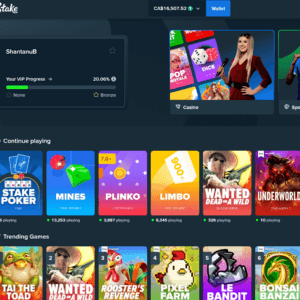On 20 April 2024, Jimmy Song, a notable figure in the Bitcoin community, shared his thoughts on the recent Bitcoin halving and the emergence of unusually high transaction fees. According to Song, the fourth Bitcoin halving occurred as scheduled on April 20 but was marked by unexpectedly high fees due to a new protocol implementation.
The Bitcoin halving is a predefined event that reduces the number of bitcoins generated per block by half, intended to limit the supply of new bitcoins over time. This halving reduced the block subsidy from 6.25 BTC to 3.125 BTC. However, what apparently caught the community’s attention was the block fees, especially the 37.626 BTC in fees in block 840,000, significantly higher than the subsidy itself, which Song notes as unprecedented.
Song explained that following this block, several subsequent blocks also recorded high fees, indicating a new trend in Bitcoin’s network. According to Song, this situation is starkly different from previous halving cycles, where blocks with fees surpassing the subsidy were rare and typically due to transaction errors.
According to Jimmy Song, the cause of these high fees is a new protocol named Runes, designed by Casey Rodarmor.
The Runes protocol is a token standard designed to bring the creation of fungible tokens to the Bitcoin network. Unlike Ordinals, which focus on NFTs (non-fungible tokens), Runes makes it easy to create tokens with identical properties, like traditional cryptocurrencies or meme coins.
Here’s how it works:
- Utilizing UTXOs: The Runes protocol takes advantage of Bitcoin’s UTXO (Unspent Transaction Output) model. Every Bitcoin transaction involves consuming existing UTXOs as inputs and then creating new UTXOs as outputs. Using Runes, you can embed special data within a UTXO, marking it as a Rune and assigning specific properties to it.
- Runestones: Think of “Runestones” as instructions within the Bitcoin network. They are special messages included in a transaction that tell the network how to create, mint, or transfer Runes. So, instead of just transferring Bitcoin, you can also perform operations to manage your Rune tokens.
- Pre-Minting and Rune IDs: When you create (“etch”) a Rune, you can pre-mint a set amount for yourself. Each Rune is identified by a Rune ID that references the block and transaction where it was created, allowing easy tracking and proof of origin.
The Runes protocol aims to make the creation and management of fungible tokens on Bitcoin much more streamlined. This opens up possibilities for a wider range of use cases, like tokens representing projects, stablecoins, or even community-centric meme coins, all directly on the robust and secure Bitcoin network.
Song detailed the operational mechanics of Runes, which involves issuing assets that can conflict in name, leading to a unique challenge. If two assets are named the same, the protocol defaults to not issuing the newer asset if a name conflict exists, hence simplifying the process but creating problematic incentives. This simplicity leads to a strategic game among users who attempt to register asset names first by paying higher fees, a practice known as “sniping.”
This sniping has escalated into a competitive and costly frenzy, often likened to a “One Dollar Auction,” where participants irrationally overpay in fees to secure asset names, a dynamic resulting in significant fee increases. Song highlights the usage of Replace-By-Fee (RBF) transactions as a strategy to outbid competitors in this asset-naming race, further inflating the fees.
Moreover, Jimmy Song pointed out the role of miners in this new fee landscape. Miners can influence which transactions are processed first, potentially prioritizing transactions based on fees offered, adding another layer of strategy and complexity to transaction processing under the Runes protocol.
Furthermore, Song raised significant concerns regarding the sustainability and strategic implications of the Runes protocol. He noted that the high fees associated with Runes—often reaching 1000 sats/vbyte—are not only unprecedented but have also overshadowed almost every other transaction type on the network. He mentioned that the financial and operational impact is substantial, with over $20 million in fees generated in just the first 18 blocks after the halving. Song went on to say that at this pace, the daily expenditure on Runes issuance could escalate to $150 million, leading to a projected weekly spend of around $1 billion, a rate Song views as unsustainable in the long term.
On the same day, crypto analyst Dylan LeClair also voiced concerns over the escalating transaction fees on Bitcoin, attributing the spike to the launch of a new token protocol named Runes. According to LeClair, this protocol, which debuted on block 840,000 and utilizes a Bitcoin script function called Op_Return, has significantly influenced fee levels. He criticized the protocol, labeling it as “pure degenerate speculation” due to its lack of promised utility or benefits beyond mere speculative trading.
LeClair warned the crypto community about the financial risks associated with investing in what he refers to as “memecoins,” especially when transaction fees are exorbitantly high. He stressed that such speculative activities are essentially a negative sum game, suggesting that the costs could outweigh any potential gains. Moreover, he emphasized the importance of proper UTXO (Unspent Transaction Output) management as a critical practice in such high fee environments, indicating that this scenario might persist for an extended period.
Featured Image via Pixabay









